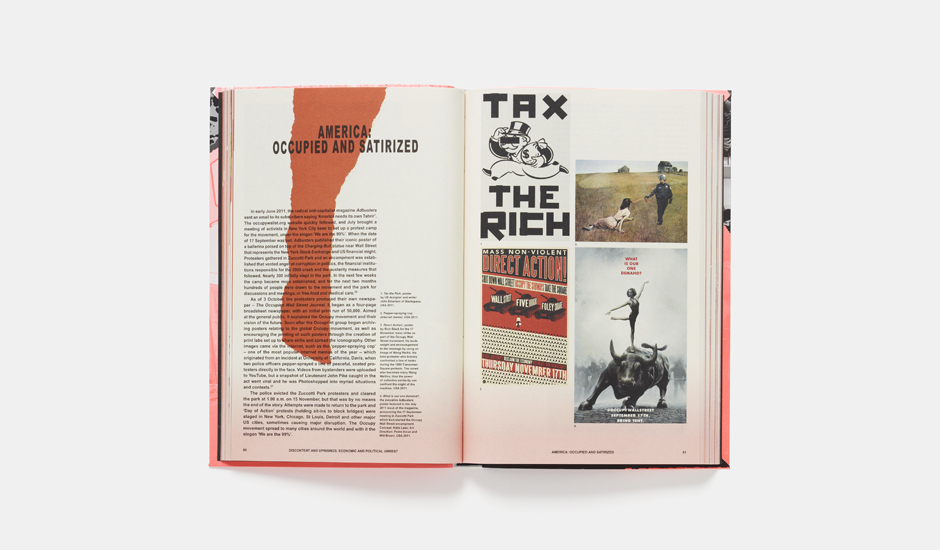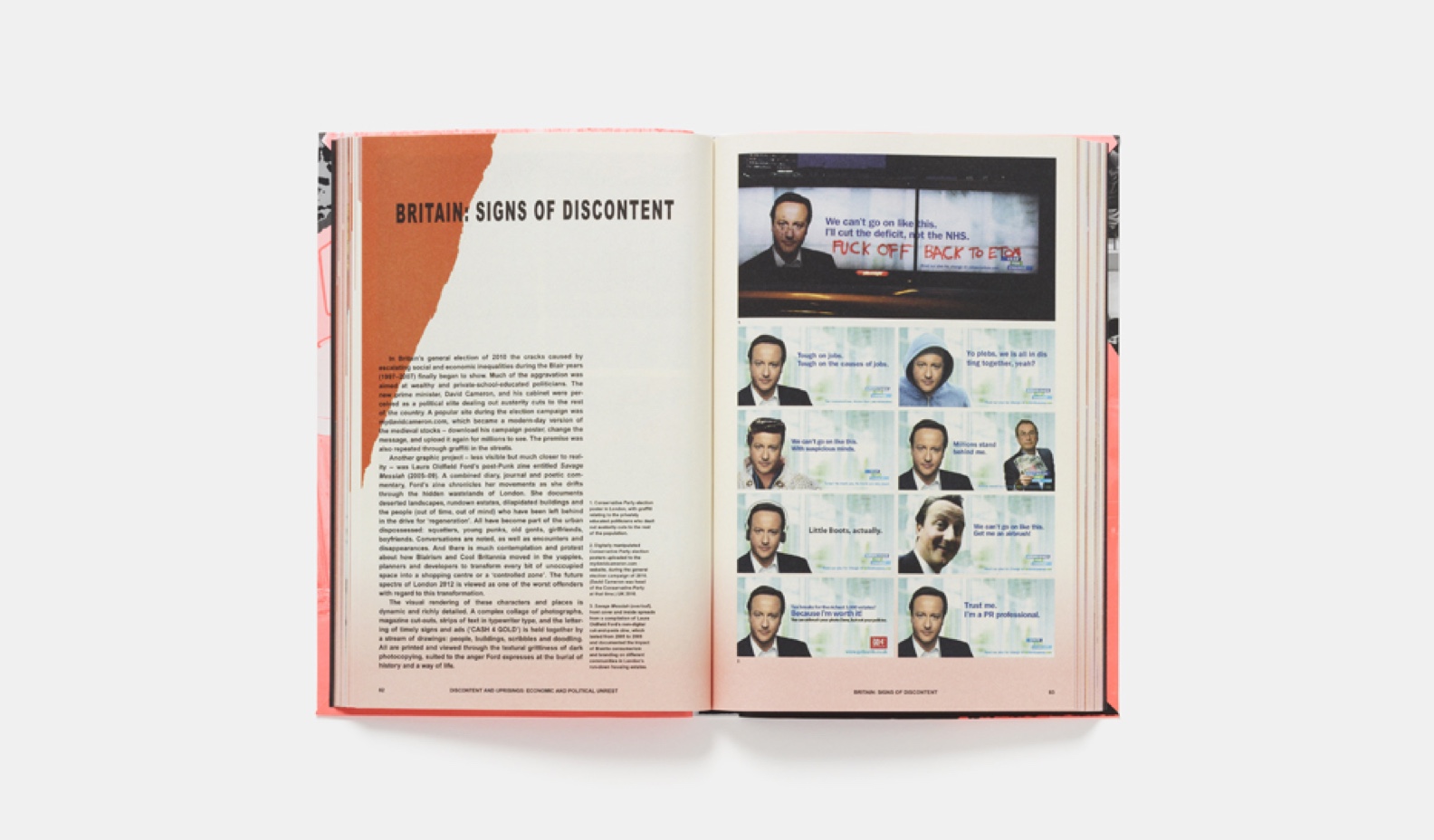Visual Impact. Creative Dissent in the 21st Century, by Liz McQuiston.
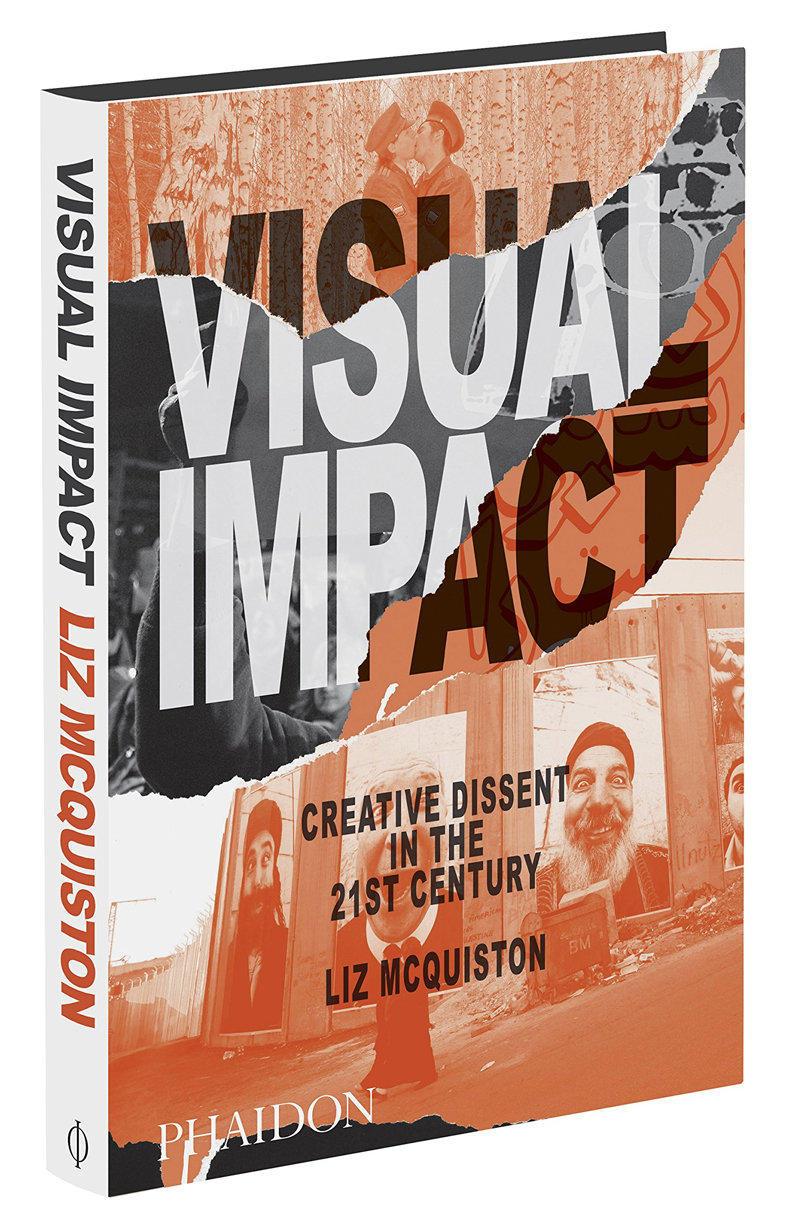
Available on amazon UK and USA
Publisher Phaidon writes: An accessible and richly illustrated exploration of how art and design have driven major social and political change in the 21st century. Features the work of over 200 artists, from the famous such as Ai Weiwei and Shepard Fairey, to the anonymous influencers working through social media. Richly illustrated with over 400 images, this is a visual guide to the most influential and highly politicised imagery of the digital age.
Explores themes and issues such as popular uprisings (the Arab Spring, the London Riots) social activism (marriage equality), and environmental crises (Hurricane Katrina), as well as the recent Je Suis Charlie protests Global in outlook, it features exciting work from emerging economies such as Brazil, Russia, China and the Middle East, as well as the US and Europe.
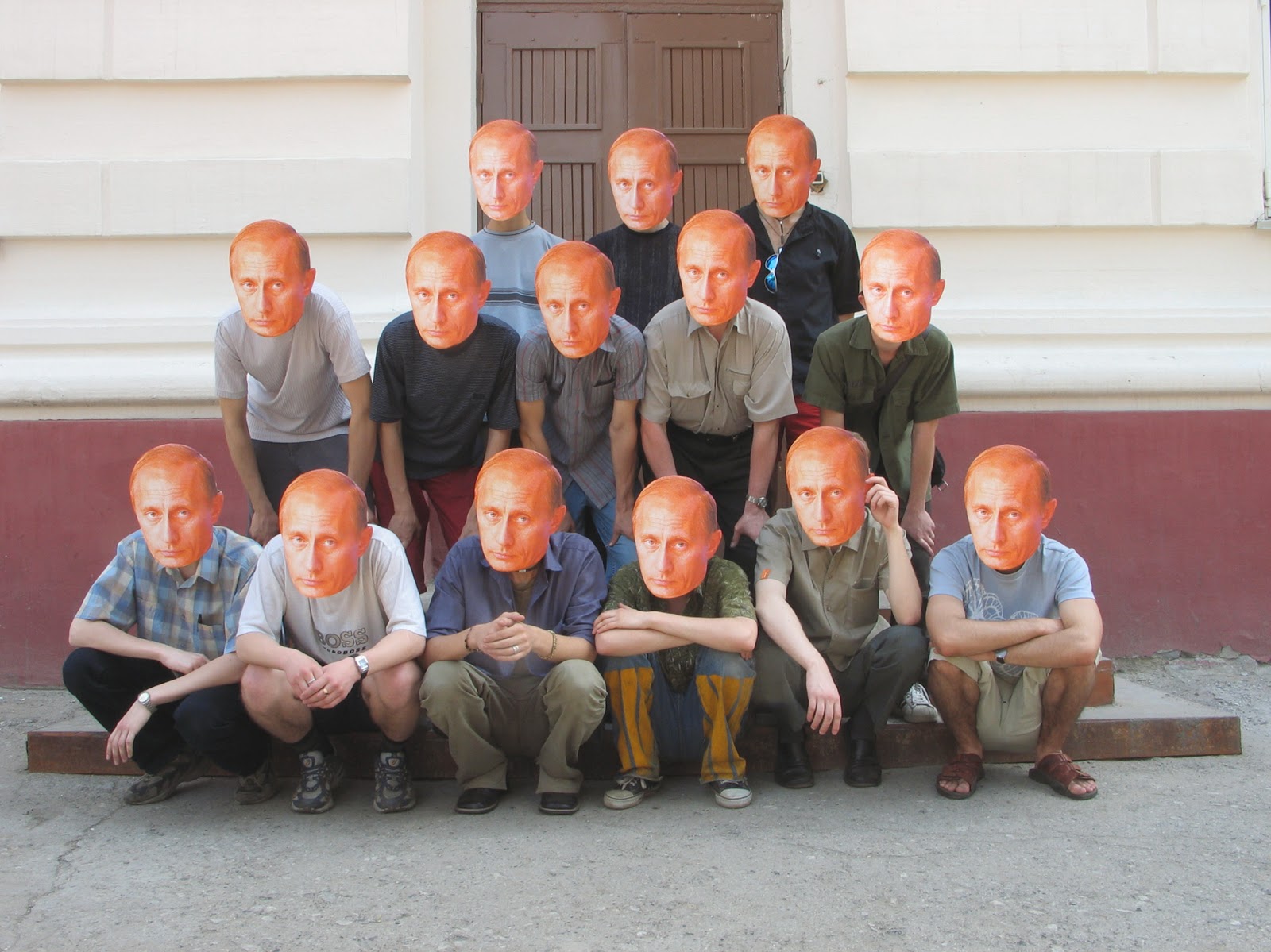
Blue Noses: Kids from our block (2), 2004
15 years of popular dissent in images!
Author Liz McQuiston practices and teaches graphic design. She has written several books that explore the intersection of design and politics: Graphic Agitation: Social and Political Graphics Since the Sixties, Graphic Agitation 2: Social and Political Graphics in the Digital Age, Suffragettes to She-Devils: Women’s Liberation and Beyond, etc. She not only knows her stuff, she also has impeccable taste. Her exploration of visual protest since 9/11 isn’t constricted by boundaries nor hierarchies. Online interventions rub shoulders with good old posters, murals with performances, court sketches with design objects. The people who rebel, resist and visually express their opposition are famous artists such as Kara Walker, Banksy and Ai Weiwei. More often than not, however, they are anonymous or operate behind pseudonyms.
The book opens on a brief overview of the visual legacy of the 1990s, a period characterized by cyberactivism and protests against the first Gulf War. But also by a rise in the use of technology by everyday people in need of new loudspeakers to get their voices heard. It’s in that paragraph that i learnt that in the late 1980s, French magazine Actuel collaborated with 16 other magazines to launch the “Fax for Freedom” campaign. They published a list of fax numbers of Chinese institutions and urged their readers to bombard them with faxes to cause chaos. In the UK, The Face magazine accompanied the campaign with the headline: “You have the technology to change history”. Fax activism! Who would have thought?
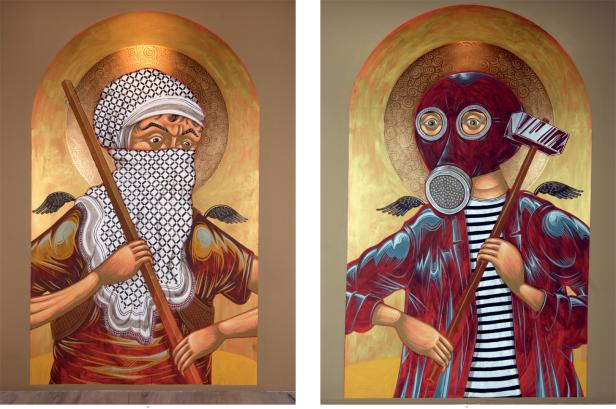
Stelios Faitakis, Socrates Drinks the Conium (détail), Installation view at Destroy Athens, 1st Athens Biennale, 2007
After this short excursion in the 1990s, each chapter tackles a different theme or geographical area:
Chapter one is all about the Arab Spring as well as the political and anti-austerity protests that followed in the rest of the world. From Los Indignados in Spain to Occupy Wall Street. From Occupy London to Russia activists calling for the respect of human rights and openly questioning the reelection of Putin.
Chapter 2 looks at the objections to the wars in Afghanistan and in Iraq and more generally at the War on Terror.
Chapter 3 explores divided countries, mostly Israel/Palestine and North/South Korea. But also cultural divisions such as the ones that cause heavy debates around the issue of the veil for women, the legalization of same sex marriage, feminism, etc. I particularly admired the diplomatic way McQuiston handled these controversial themes.
Chapter 4 is all about environmental disasters, both natural and man-made.
This book is intelligent, invigorating and often hilarious. It reminds us that (we) people are not only creative and resourceful, they are also brave enough to brandish their disapproval. The protests might not always the desired effect. But as Emiliano said Prefiero morir de pie que vivir de rodillas (I’d rather die on my feet, than live on my knees.)
Here are some of the works i discovered in the book. Some with comments. Others are perfectly happy without:
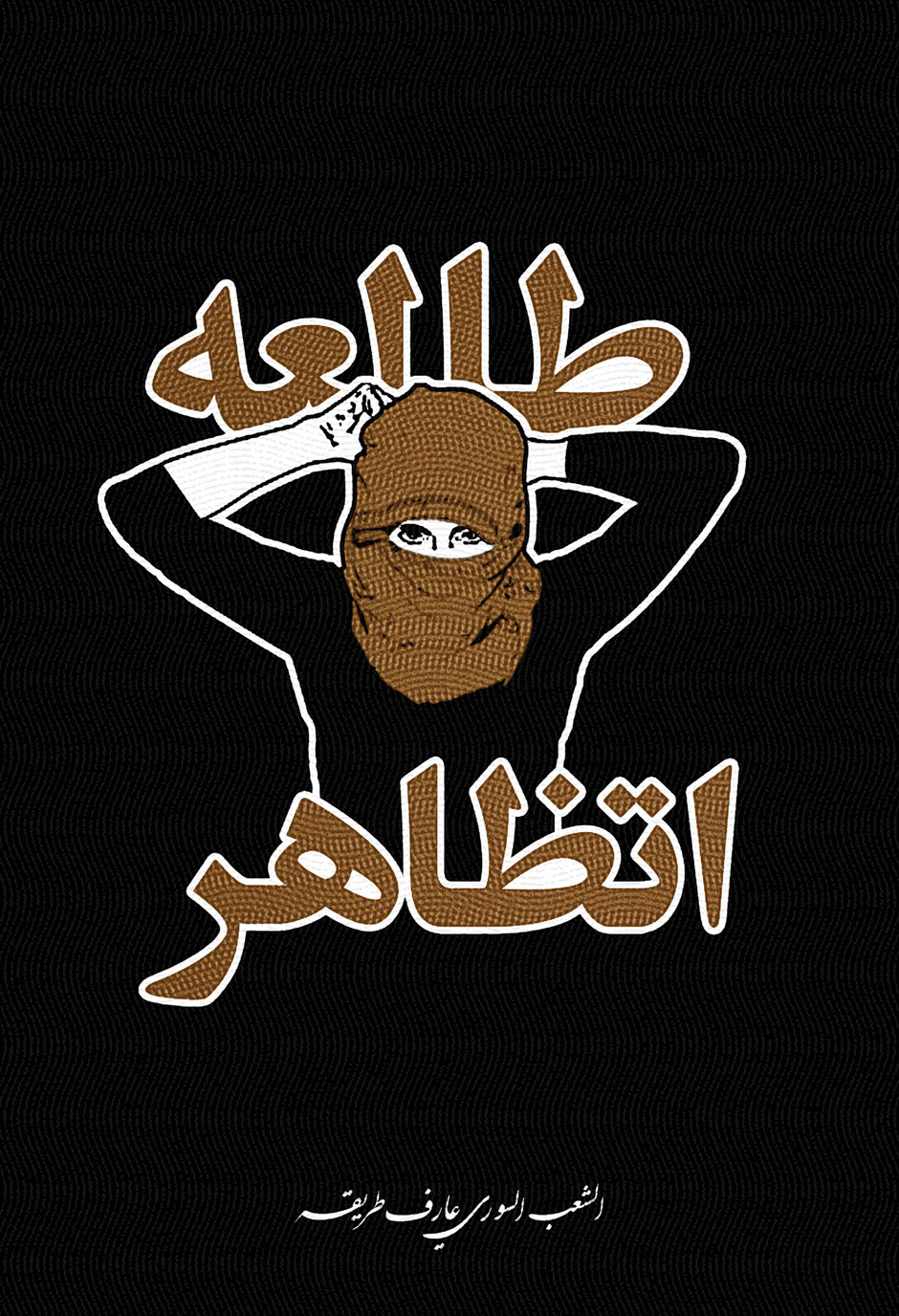
Alshaab Alsori Aref Tarekh, The Syrian People Knows Its Way: Going out to demonstrate, 2012
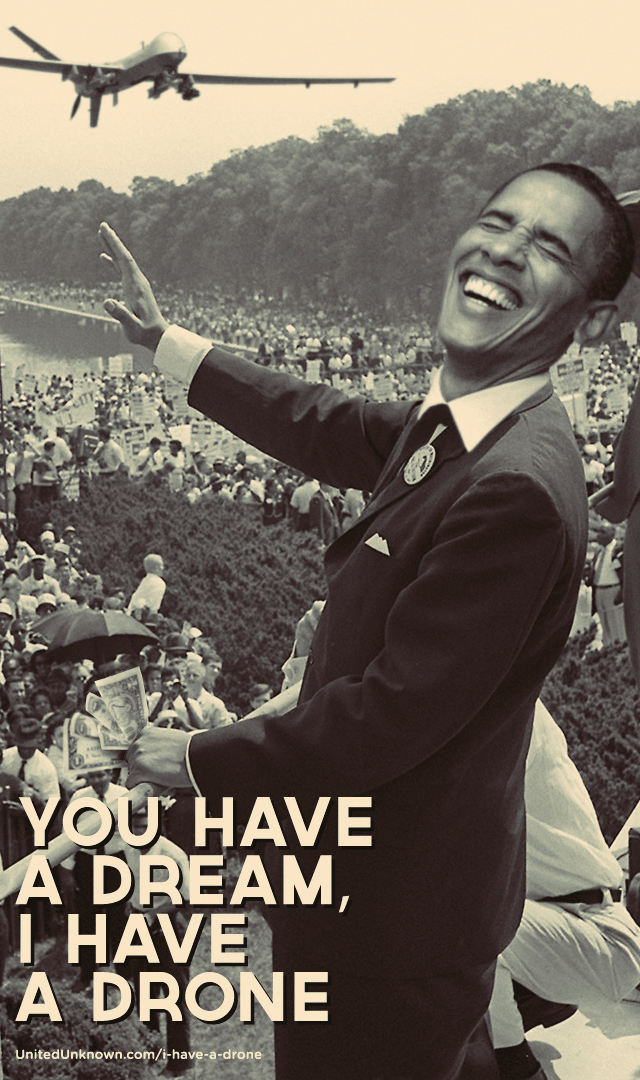
The United Unknown, You Have a Dream, 2013
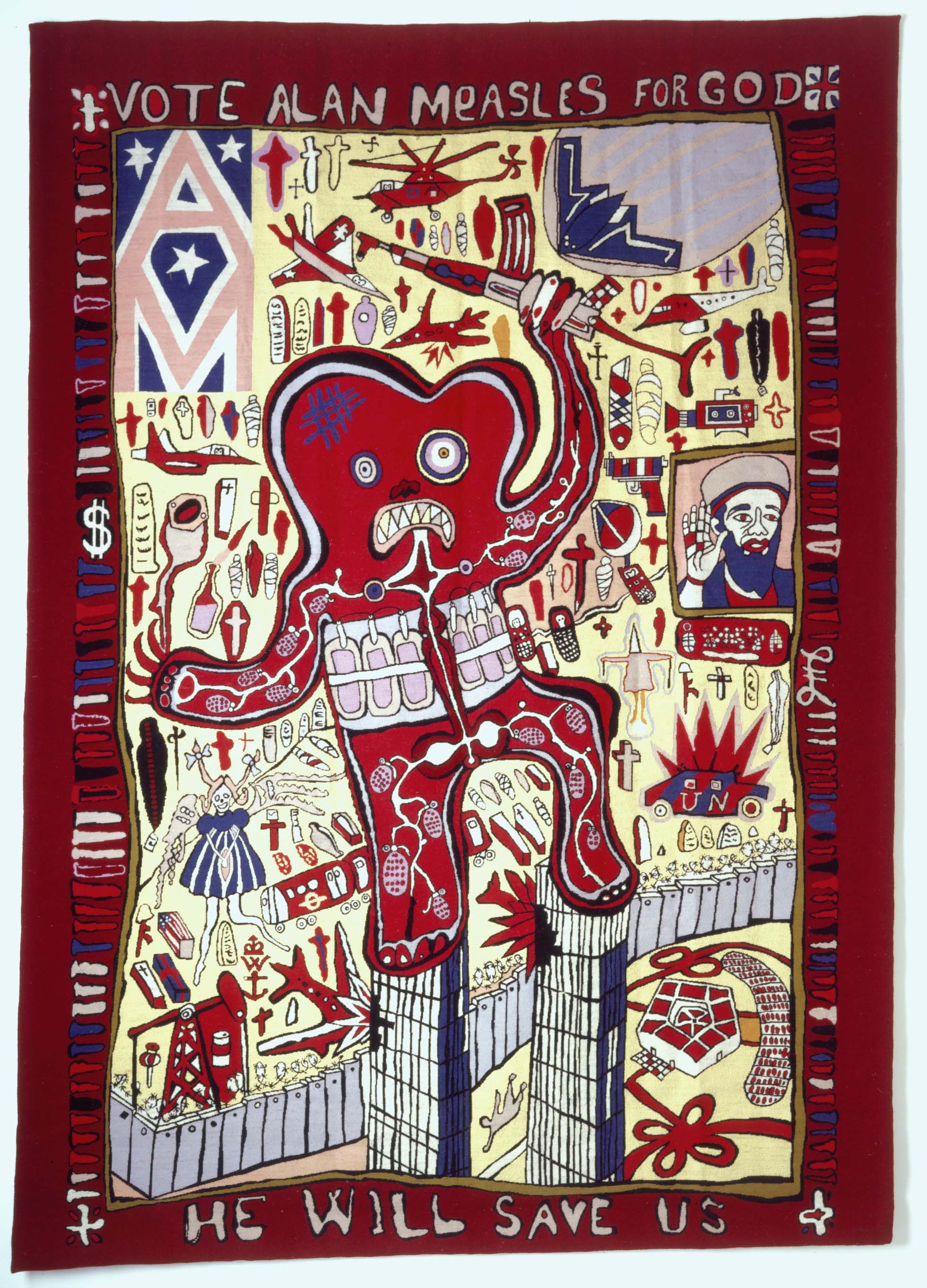
Grayson Perry, Vote Alan Measles for God, 2007
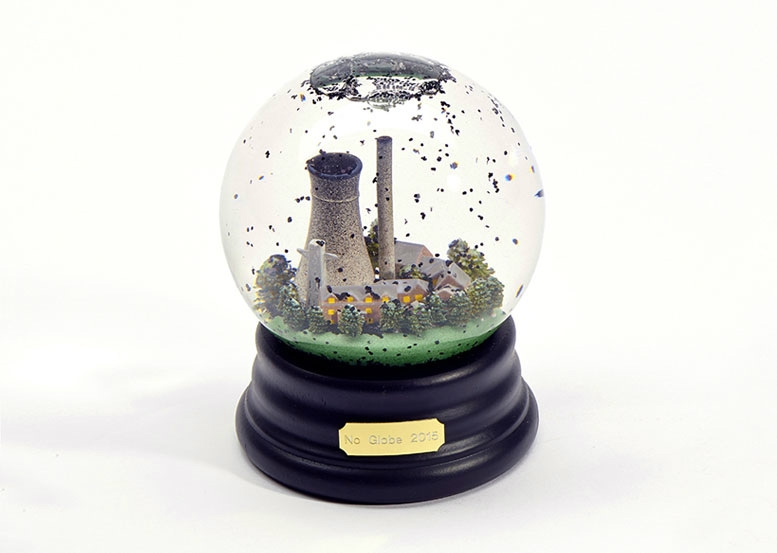
Dorothy, No Globe for Earth Hour
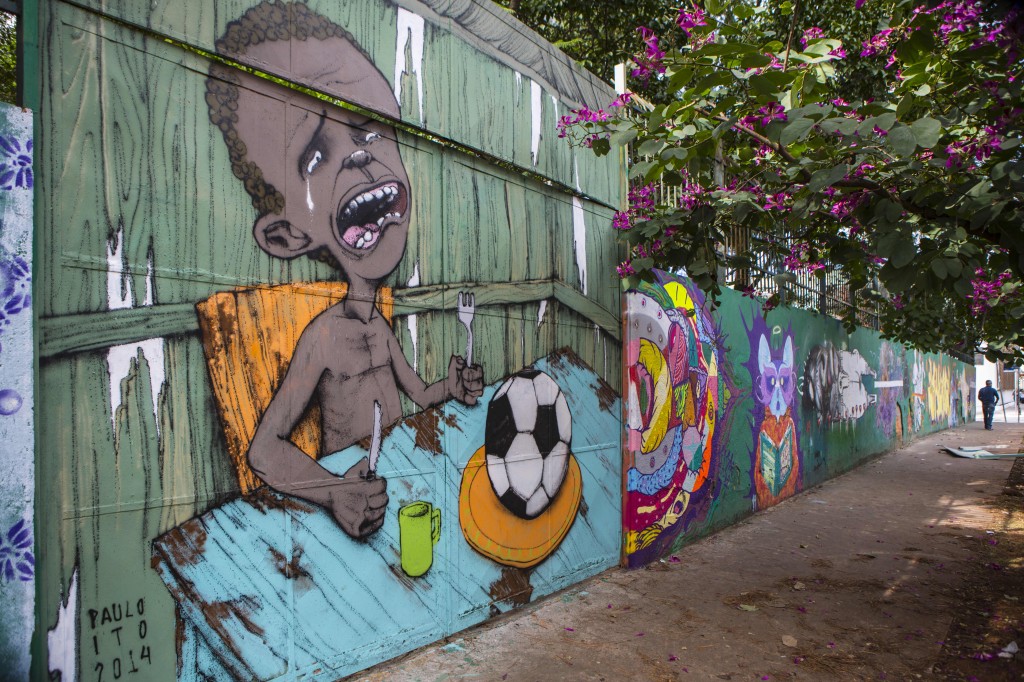
Paulo Ito‘s mural reflects on the money lavished on the World Cup while so many people in Brazil are hungry
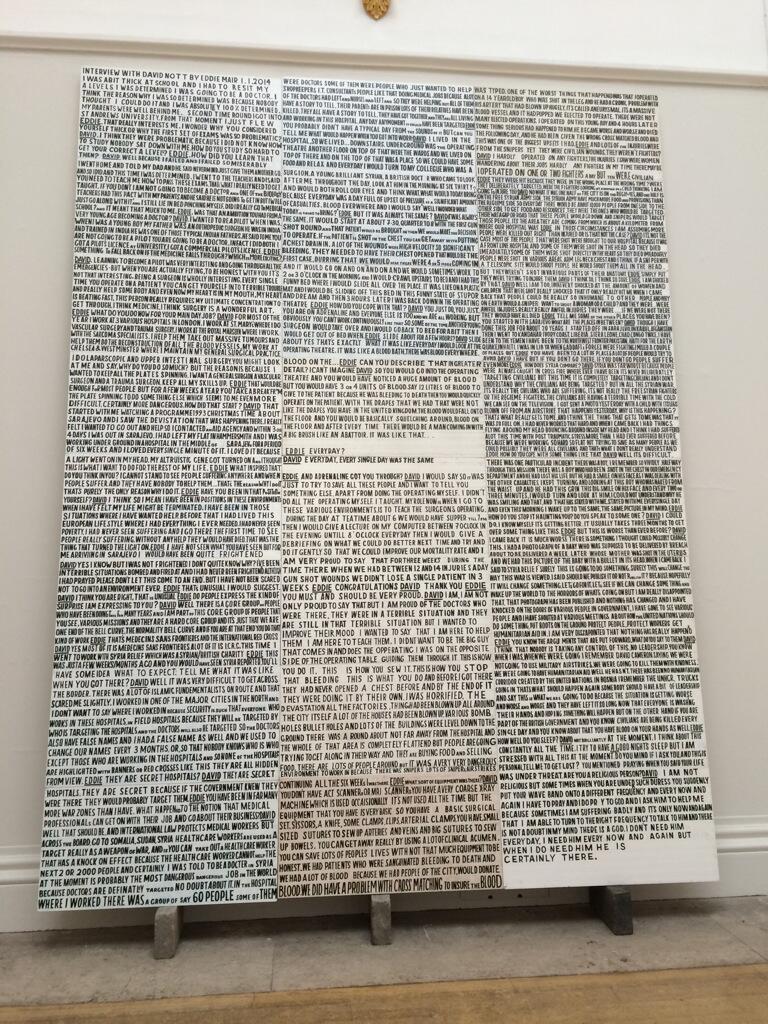
Bob and Roberta Smith, Interview with David Nott by Eddie Mair
Bob and Roberta Smith painted the full transcript of a radio interview of Dr David Nott in which he shared his traumatic experience working as a surgeon in war torn Syria.
Excerpts from the interview include: “It was like a bloodbath… You’d quickly operate on a patient… and you’d basically be squelching around with blood on the floor. And after every time there’d be a man come in with a big brush, like in an abattoir, it was like that.”
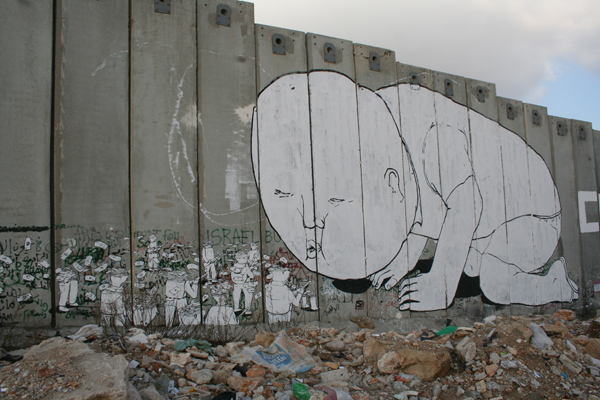
Blu, giant child blowing at a group of soldiers who crumble away into a pile of dollar bills. Part of Santa’s Ghetto, 2007. Photo Tristan Manco
In 2007, Banksy took his annual underground art show to the West Bank and invited artists to create new works for the 8 metre high wall that surrounds the city of Bethlehem and separates Palestinian families from illegal Israeli settlements.
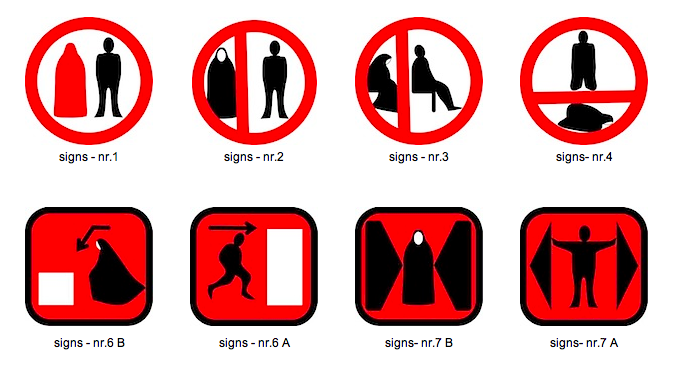
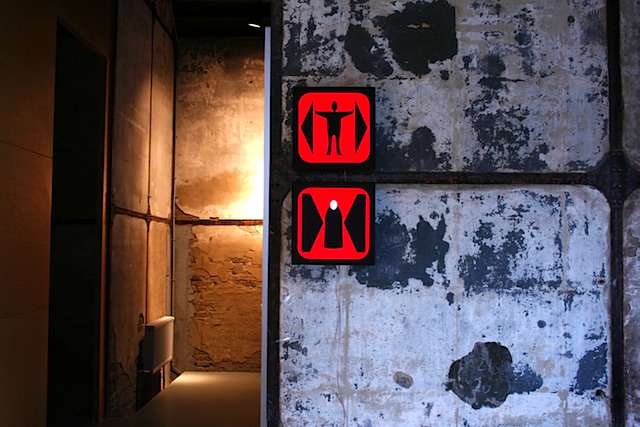
Parastou Forouhar, Signs, 2004
Parastou Forouhar’s simple and elegant symbols denounce the marginalization of women in the Middle East.
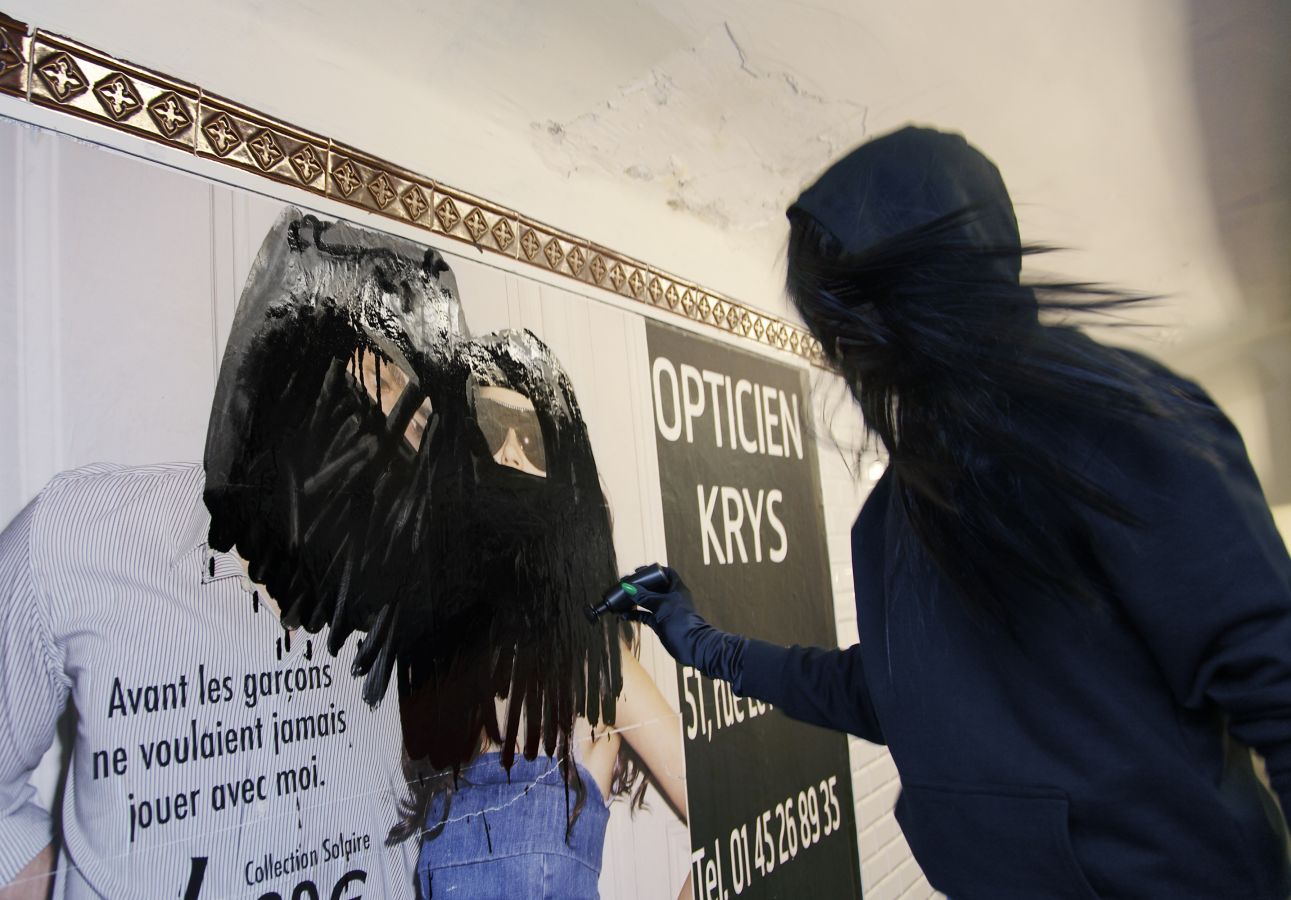
Princess Hijab. Photo Kai Jünemann
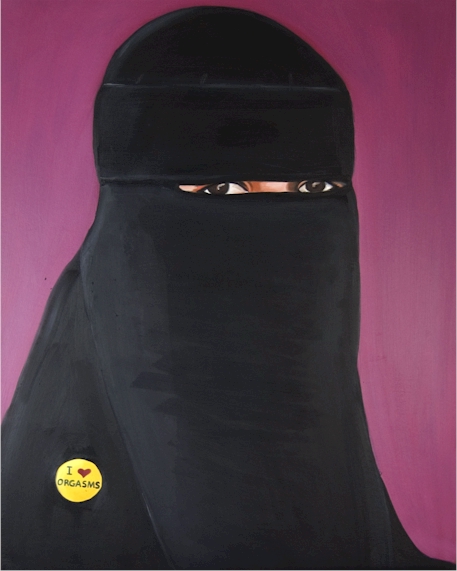
Sarah Maple, I Love Orgasms. Photo via art threat
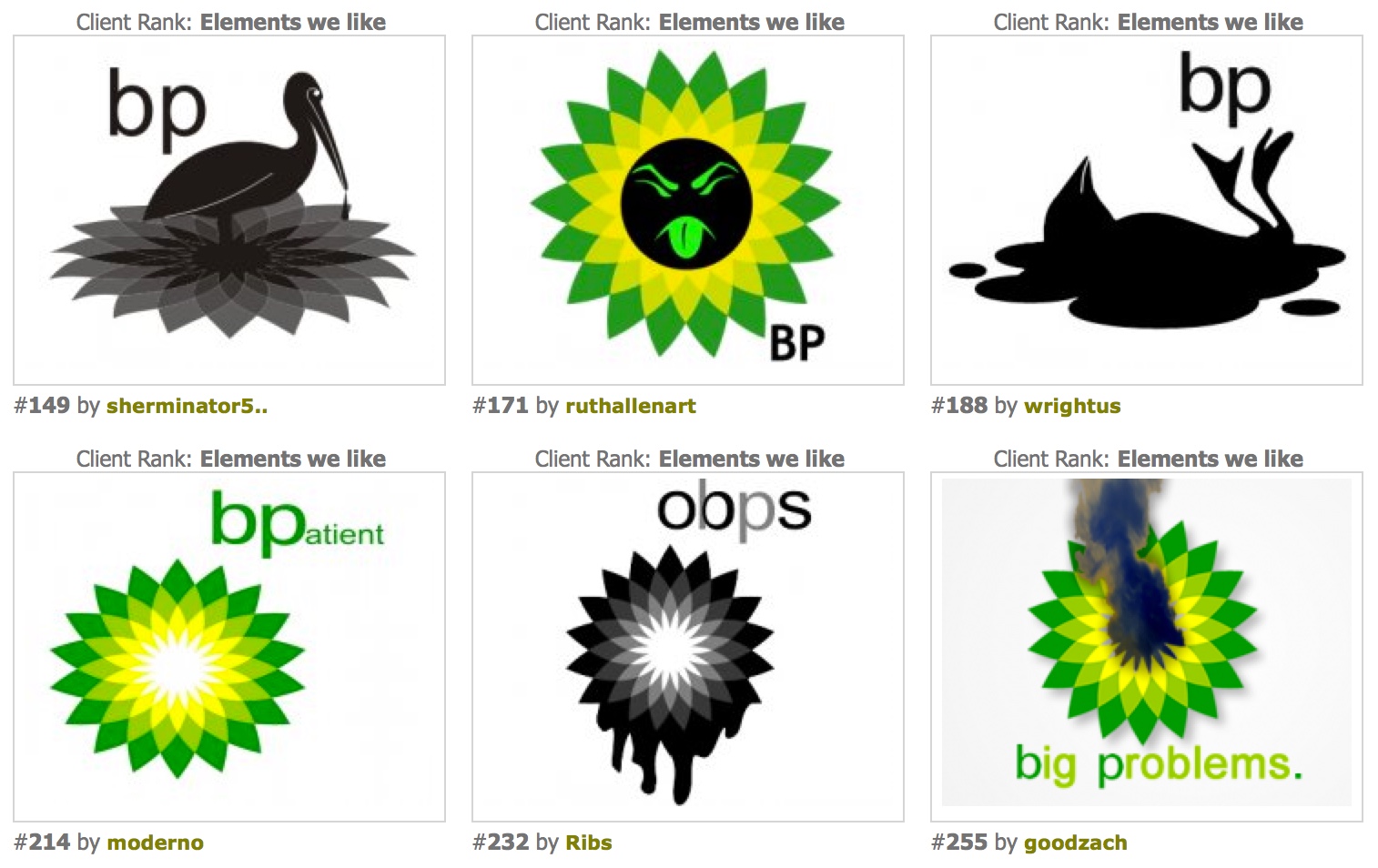

Logomyway.com, Selection from the BP Logo Design Contest
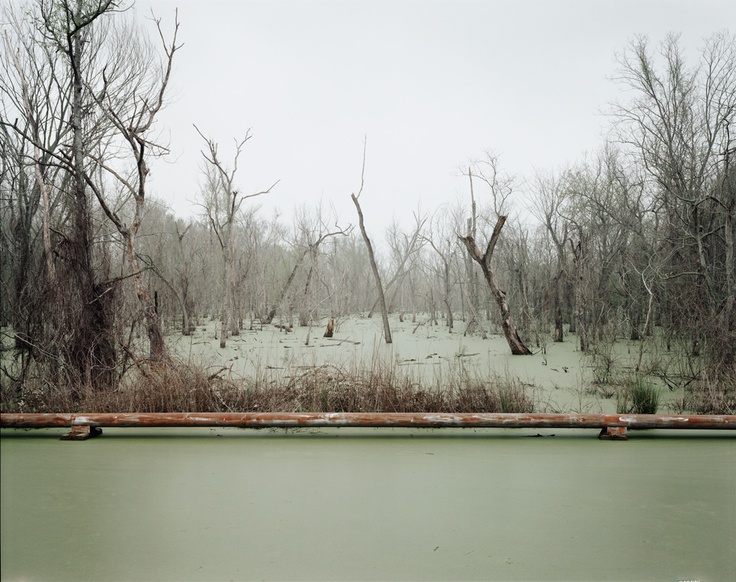
Richard Misrach, Swamp and Pipeline, Geismar, Louisiana, 1998. From Petrochemical America, photographs by Richard Misrach, Ecological Atlas by Kate Orff (Aperture, 2012)
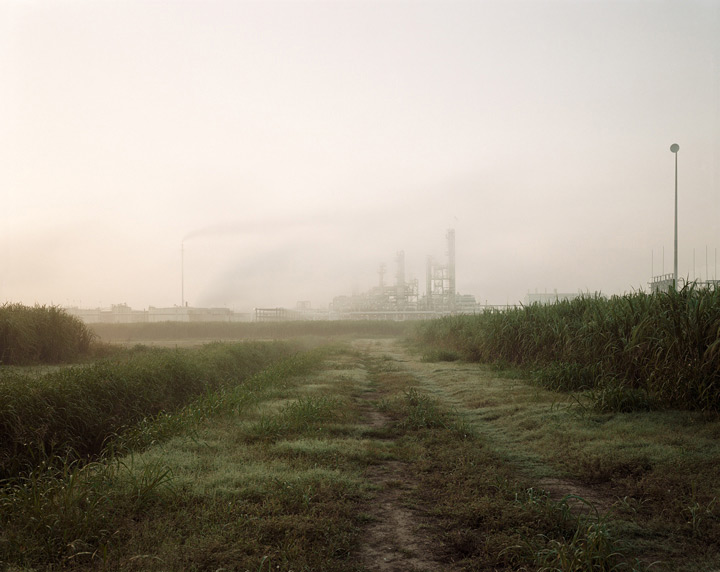
Richard Misrach, Sugar Cane and Refinery, Mississippi River Corridor, Louisiana, 1998. From Petrochemical America, photographs by Richard Misrach, Ecological Atlas by Kate Orff (Aperture, 2012)
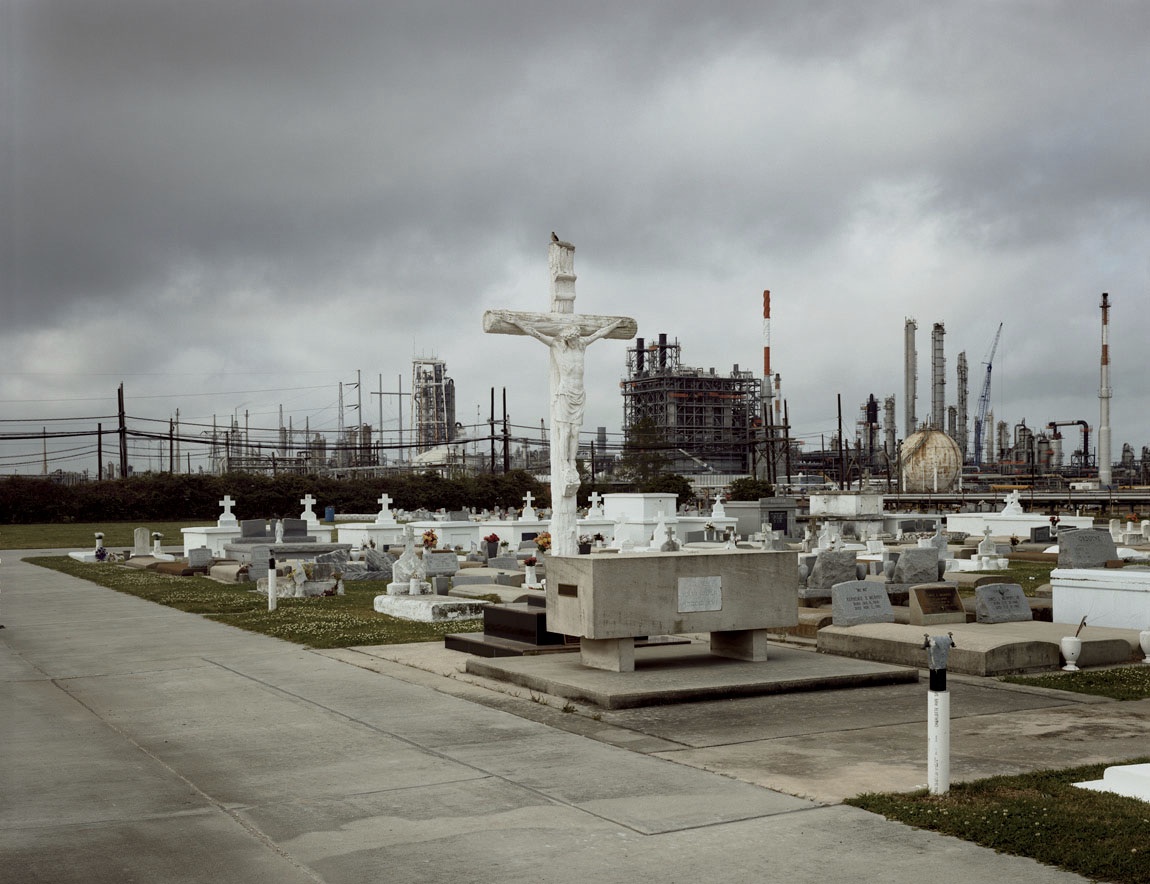
Richard Misrach, Holy Rosary Cemetery and Dow Chemical Corporation, Taft, Louisiana, 1998. From Petrochemical America
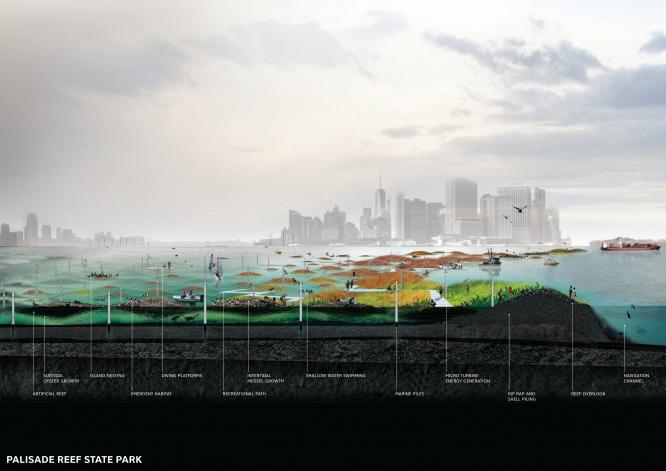
In 1998, Richard Misrach was commissioned to produce a body of work on the theme of “Picturing the South” series. Misrach decided to focus on “Cancer Alley,” the Mississippi corridor that stretches between New Orleans and Baton Rouge and that is bordered by industrial plants that produce a quarter of America’s petrochemicals.
Over a decade later, Misrach returned to Cancer Alley to shoot. This time however, he collaborated with landscape architect Kate Orff whose “Ecological Atlas” of drawings and maps further visualizes the historical, economic, and ecological factors that affect the region.

Views inside the book:
